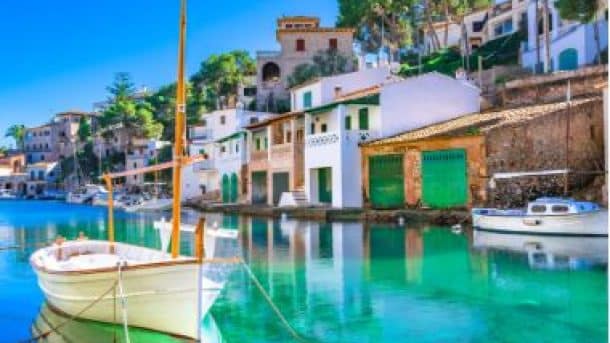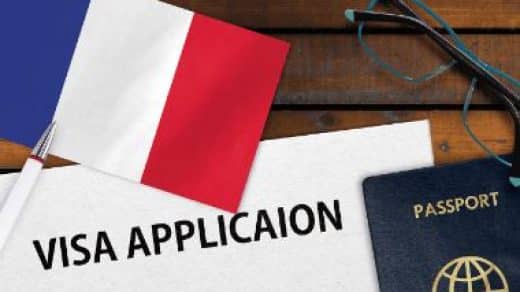Mallorca is an alluring blend of seaside and mountain, town, vineyard, and energetic capital, Palma. It combines a culture that is distinctly its own with a summertime paradise. Long lengths of golden sand may be found in the north, and to the west, the Serra de Tramuntana mountains descend to blue waters and secluded coves. You can spend your days visiting the hill villages that have served as inspiration to many poets and artists. You can also explore the Roman ruins at Pollentia or visit the bustling, quaint town of Palma, which has a bustling restaurant scene, a cobblestone old town, and a cathedral with stunning views of the Mediterranean.
While Mallorca’s stunning coastline has long drawn attention, the island’s interior is also having a moment in the spotlight, with boutique hotels nestled among almond and olive trees on country estates, local farmers welcoming guests to sample their produce, and vineyards providing tastings.
Local festes, or festivities, abound throughout the summer calendar: from the June beach fires honoring Saint Joan to the August Battle of Pollensa between the Moors and Christians. Though Mallorca is a popular tourist destination, its traditions and customs endure.
How to Proceed
Mallorca is the biggest and most varied of the Balearic islands. Springtime brings sunseekers setting up their towels on the sands of pine-backed coves and sweeping bays, walkers enjoying picturesque coastal routes and rural trails, and avid cyclists taking on the winding routes that climb the Sierra de Tramuntana and Sierra de Llevant mountain ranges.
Drive around the island in a rental car and take in the beautiful scenery as you move from the capital to the golden sands of the Bay of Alcudia or from the affluent Port de Sóller on the west coast to the Cap de Formentor lighthouse, which is situated amidst the striking peaks of the northernmost tip of the island.
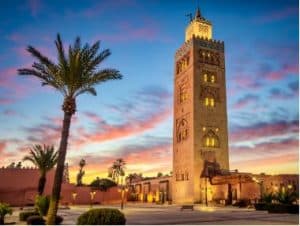
The villages come next. The elegant, green-shuttered stone buildings of Deià, where poet Robert Graves’s residence is now a museum, the picturesque, golden-hued Pollensa with its Knights Templar church, and the mountain hideaway Valldemossa, where Chopin stayed at the Carthusian monastery in 1839.
Where to stay in Mallorca
There are plenty of places to stay in Mallorca, ranging from ultra-luxurious getaways to historic country estates, from rustic farmhouses to hotels with commanding views of the sea.
Luxurious Cap Rocat, a 19th-century stronghold with apartments and private infinity pools that appear to have been hewn from the very rock, is located around the Bay of Palma, gazing back towards the city. Palma is brimming with boutique hotels, renovated palaces, and mansions with rooftop pools.
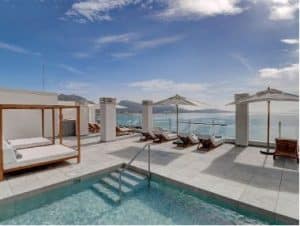
The hinterland of the island is scented with almond blossoms and dotted with golden-hued farmhouses converted into holiday villas, country estates, and mountain monasteries that are now opulent rural retreats. To the north of the island, a blend of all-inclusive resorts and smart hotels fringe the bays of Pollensa and Alcudia.
While the ivy-draped Belmond La Residencia gives a touch of luxury to genteel Deià, the fishing village of Port de Sóller, tucked among the folds of the Tramuntana mountains to the west, is dominated by the Jumeirah Port Sóller Hotel, a celebrity favorite.
Consumables in Mallorca
Port de Sóller red prawns and Mallorcan porc negre (black pig) are used to make the cured sobrassada sausage. The food of Mallorca is a true fusion of sea and mountain, or mar y montaña.
The island has an abundance of locally produced goods, including as hand-harvested sea salt from the salt flats at Es Trenc and cold-pressed extra virgin olive oil. Then there are the artisan cheeses, citrus fruits, almonds, and apricots, as well as the incredibly delicious red and white wines. Explore the 300-year-old Bodega Ribas, the island’s oldest winery, or stop by the stunning Finca Biniagual, which has been gaining attention for its well regarded wines.
Visit Palma’s Mercat de l’Olivar to purchase fresh ingredients, or visit the hip San Joan and 1930 markets to sample tapas and regional wines. Fishing towns and casual chiringuito beach bars serve up fresh catch of the day, while the island’s nine glittering Michelin stars attest to an exciting culinary revival. For a contemporary take on classic Mallorcan fare, visit Maca de Castro in Port Alcudia. Andreu Genestra also honors island products at his own eatery in the countryside, close to Capdepera.
How to Avoid missing in Mallorca
Although it could be alluring to head straight to Mallorca’s beaches, spend some time in Palma and you’ll find a bustling city with lots of hip restaurants, rooftop cocktail lounges, galleries, boutiques, and the remarkable Es Baluard modern art museum housed in a 16th-century fortress. Next, go to the Miró Mallorca Foundation, which is located just outside of the city and houses Joan Miró’s artwork in his former workshops.
Take a trip unlike any other by taking the historic train from Palma to Sóller. A century-old narrow-gauge train with wooden cars rattles along, providing breathtaking views as it climbs into the mountains, crosses bridges, and passes through tunnels to the charming mountain village.
There are over 300 beaches in the area, so visiting them all will need many trips. The drive along winding roads is definitely worth it, though, because of the sparkling seas and small beach of Cala Sa Calobra, which is tucked between two towering cliffs on the north coast. The path is so beautiful that cyclists adore it; alternatively, you can take the boat from Port Sóller.
Be informed before you leave.
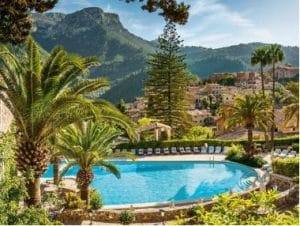
Mallorca adopts the euro, just like the rest of Spain does. When visiting during the summer, be prepared for crowded beaches and parking challenges near some coves and smaller coastal towns. However, you may take advantage of gorgeously sunny days without the crowds if you go in the spring or in September and October.
Although Mallorca is typically safe, as a visitor, be mindful of your belongings as there are some opportunistic thefts. The island has a reputation for being a party destination, but this is limited to a few areas, such Magaluf and Playa de Palma, so it’s easily avoided unless that’s your thing.
FAQs
Which season is ideal for traveling to Mallorca?
It’s up to you to decide when would be the best time to visit Mallorca.
Peak Season (June–August): Warm, sunny weather perfect for beach vacations and aquatic sports. Aim for greater prices and larger crowds.
Shoulder Seasons: April–May & September–October: Beautiful weather, less people, ideal for outdoor activities and sightseeing.
November through March is the off-season, when there are the fewest tourists, mild weather, and the greatest airfare and hotel deals. It’s possible that some stores and attractions have set hours.
Does visiting Mallorca require a visa?
Since Mallorca is a part of Spain, the necessity for a visa varies per country. Most European Union (EU) nationals are exempt from needing a visa. Before you go, make sure you are aware of the most recent visa regulations specific to your country.
What is the cost of traveling to Mallorca?
Mallorca is affordable for a variety of budgets. Dining and lodging are the largest outlays. For a more economical choice, think about renting self-catering flats or vacationing in smaller towns.
Which transportation method works best in Mallorca?
Most towns and resorts are connected by public buses. Hiring a car gives you greater freedom to discover mountain communities and secret coves. Although they are widely available, taxis can be pricey, particularly for longer trips.
Which coin is in circulation in Spain?
The Euro (EUR) is Spain’s official currency. Although credit cards are accepted everywhere, it’s advisable to have extra cash on hand for minor purchases and local markets.

